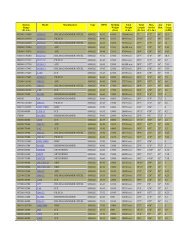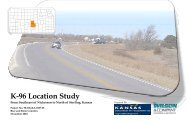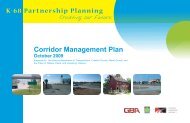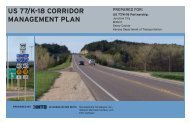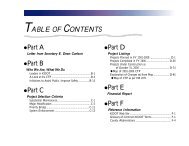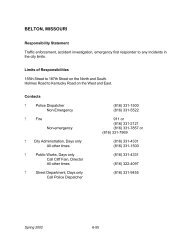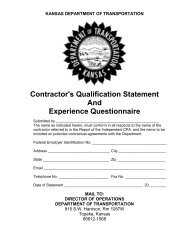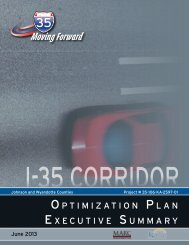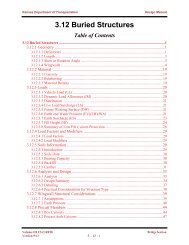KANSAS MOTOR VEHICLE ACCIDENT REPORT CODING MANUAL
KANSAS MOTOR VEHICLE ACCIDENT REPORT CODING MANUAL
KANSAS MOTOR VEHICLE ACCIDENT REPORT CODING MANUAL
Create successful ePaper yourself
Turn your PDF publications into a flip-book with our unique Google optimized e-Paper software.
ecord a ‘U’. All Safety Equipment codes are shown on the code sheet (form 855).<br />
Three types of child restraint seats;<br />
1) Infant – seat faces backwards<br />
2) Child – Front facing seat for infant up to approx 5 years old<br />
3) Booster – Front facing booster seat for approximately 5 to 8 years old (up to 80 lbs or 4’9”)<br />
Important notes about safety equipment use:<br />
850B<br />
Child Passenger Safety Act (KSA 8-1343)<br />
1) Requires all children under age 4 to be in a federally approved child safety seat.<br />
2) Children ages 4 to 8 years must be in a federally approved child safety seat/booster seat<br />
UNLESS the child weighs more than 80 pounds OR is taller than 4’ 9”.<br />
3) Children 8 years of age but under the age of 14 must be protected by a safety belt.<br />
4) This law applies to all passenger cars designed for carrying fewer than 10 passengers, as<br />
defined by KSA 8-1343a. The fine in $60 including court costs.<br />
Safety Belt Use Act (KSA 8-2501)<br />
5) Primary Enforcement: Occupants of a passenger car (carrying fewer than 10 passengers) 14<br />
years of age but younger than 18 years of age can be cited for this violation – KSA 8-2503.<br />
The fine is $60 including court costs.<br />
6) Secondary Enforcement: front seat occupants of a passenger car (carrying fewer than 10<br />
passengers) 18 years of age or older can be cited for a seat belt violation only after being<br />
cited for another violation, such as an expired registration. KSA 8-2503. The fine is $30,<br />
including court costs.<br />
Commercial Seat Belt DOT.392.16/ CMV 66-1,129 82-4-3h<br />
A commercial motor vehicle which has a seat belt assembly installed at the driver’s seat shall not<br />
be driven unless the driver has properly restrained himself/herself with the seat belt assembly.<br />
The fine is $100 plus court costs.<br />
Airbag Codes: Use the ‘Airbag’ codes that affect only the seat position (if occupied) that applies<br />
to the airbag’s deployment.<br />
Front<br />
Airbag<br />
In the example, the only occupants<br />
deployed<br />
requiring airbag codes would be the<br />
1 2 3 driver (1) and “shotgun” position (3).<br />
4 5 6<br />
7 8 9<br />
If a side airbag deployed for another<br />
seat position, code it accordingly.<br />
Another Example: If an occupant is riding in the back seat of a car on the left side (seat type<br />
‘04’) at the time of the accident, and they were wearing their seat belt and an airbag deployed<br />
directly affecting their seat position, code an ‘R’ for that occupant.<br />
Motorcyclists Codes: Record helmets (H), eye protection (E), or Both (B) as they apply to<br />
occupants of motorcycles, mopeds, and ATVs. Do NOT use these safety equipment codes for<br />
other vehicle body types or pedestrians even if these protection types are used.<br />
53



